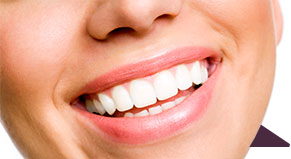 Did you know that toothpaste has a secret measurement that’s usually not listed anywhere on the label or product?
Did you know that toothpaste has a secret measurement that’s usually not listed anywhere on the label or product?
This measurement is called the “relative dentin abrasivity”, or RDA for short. The RDA measures how abrasive toothpaste is on your teeth. Yes, there are some brands of toothpaste on the market that can be bad for your teeth if used on a regular basis.
The Food and Drug Administration requires all toothpaste companies to regularly measure the RDA of their product and disclose that measurement to the FDA prior to gaining approval. However, the law does not require the toothpaste companies to disclose how abrasive their product is on the label, packaging, or product itself.
This can be potentially harmful to certain groups of people. Scientific studies have shown that eroded tooth enamel is highly susceptible to abrasion. Over time the wear and tear caused by abrasive toothpaste on people with eroded tooth enamel can lead to negative consequences with regards to sensitivity, functionality, and even the overall aesthetics.
Toothpaste Ingredients
The various ingredients in toothpaste have a specific job to perform. While overall totals vary widely from manufacturer to manufacturer, here is a general breakdown of ingredients, total percentage, and their purpose:
Abrasives – Abrasives are required by toothpaste because they help remove stains and debris from teeth. Aluminum oxide, calcium pyrophosphate, and even silica are all used as abrasives. The make up 20-40% of overall toothpaste ingredients.
Binders – Binders are used to provide shape and consistency to the toothpaste as it is squeezed out of the tube. Polymers such as carboxymethyl cellulose, alginate, and gums are used. Binders comprise around 2% of toothpaste ingredients.
Humectants – These prevent loss of water and hardening of the toothpaste when exposed to air. Glycerine, sorbitol, and polyethylene are just a few of the ingredients that toothpaste humectants can contain. They make up anywhere from 20-40% of toothpaste.
RDA
The American Dental Association (ADA) has come out with guidelines for toothpastes that contain the ADA Seal of Acceptance, which is a designation awarded to products that the ADA determines as beneficial to overall dental health.
For example, before the ADA will give out a Seal of Acceptance, the toothpaste must contain fluoride. It cannot contain flavoring agents which contribute to or cause tooth decay. Scientific evidence must be provided that demonstrates the safety and efficacy of the product.
The ADA also has guidelines for the Relative Dentin Abrasivity of a toothpaste. They recognize that the dentin that lies beneath tooth enamel can be exposed. If an abrasive enough toothpaste is used, it can cause further harm to the dentin. The RDA is a scale that goes from 0 – 250.
RDA Table for Toothpaste
| 0 – 70 | Low abrasive |
| 70 – 100 | Medium abrasive |
| 100 – 150 | Highly abrasive |
| 150 – 250 | Harmful limit |
The lower the RDA number on the above chart, the less likely the product will cause wear and tear on your tooth enamel/dentin. Low abrasivity means a safer toothpaste to use.
Back in the early 1900’s, there were no RDA recommendations. No standards or FDA rules existed. Major toothpaste manufacturers regularly used beach sand and ground up cuttlefish bones to increase the cleaning power of their products – or so they thought. If compared to today’s standards, the toothpaste of the early 1900’s would have an abrasiveness index of around 1,000 to 2,000!
Brands of Toothpaste and Abrasiveness
While we can’t list every single brand of toothpaste on the market (we’d need 2-3 blog posts to do that), here is a list of toothpastes currently on the market to give you a general idea of how abrasive your preferred brand may be:
Name Brand RDA
| Toothbrush with tap water | None | 4 |
| Baking Soda | None | 7 |
| Dental Care | Arm & Hammer | 35 |
| Cavity Protection | Colgate | 70 |
| Advance White | Arm & Hammer | 106 |
| Extra Whitening | Crest | 130 |
| None | Pepsodent | 150 |
| Advance Whitening | Colgate | 200 |
What Abrasiveness is Recommended?
This subject is currently under debate by scientists and dentists alike. Some say that an RDA of 250 is no worse than an RDA of 50. Other dentists recommend anything under a 75 rating. For those people who have worn tooth enamel or gingival recession, it’s best to try to stay under a 70 rating. If you’re unsure, ask your dentist for his/her recommendation based upon your oral health requirements.
Research has shown that 50% of abrasion occurs within the first 20 seconds of brushing. This means the teeth that you first start brushing will bear the biggest brunt of the abrasiveness.
Dental Care in Downtown Chicago
If you have any questions about toothpaste that weren’t answered in this blog post, give Water Tower Dental Care a call to schedule a consultation (312) 787-2131. If you haven’t had your teeth cleaned in over a year, come see us as soon as possible. Regular teeth cleanings are essential for good oral health and can prevent complications from arising down the road.






 Website Powered by Sesame 24-7™
Website Powered by Sesame 24-7™